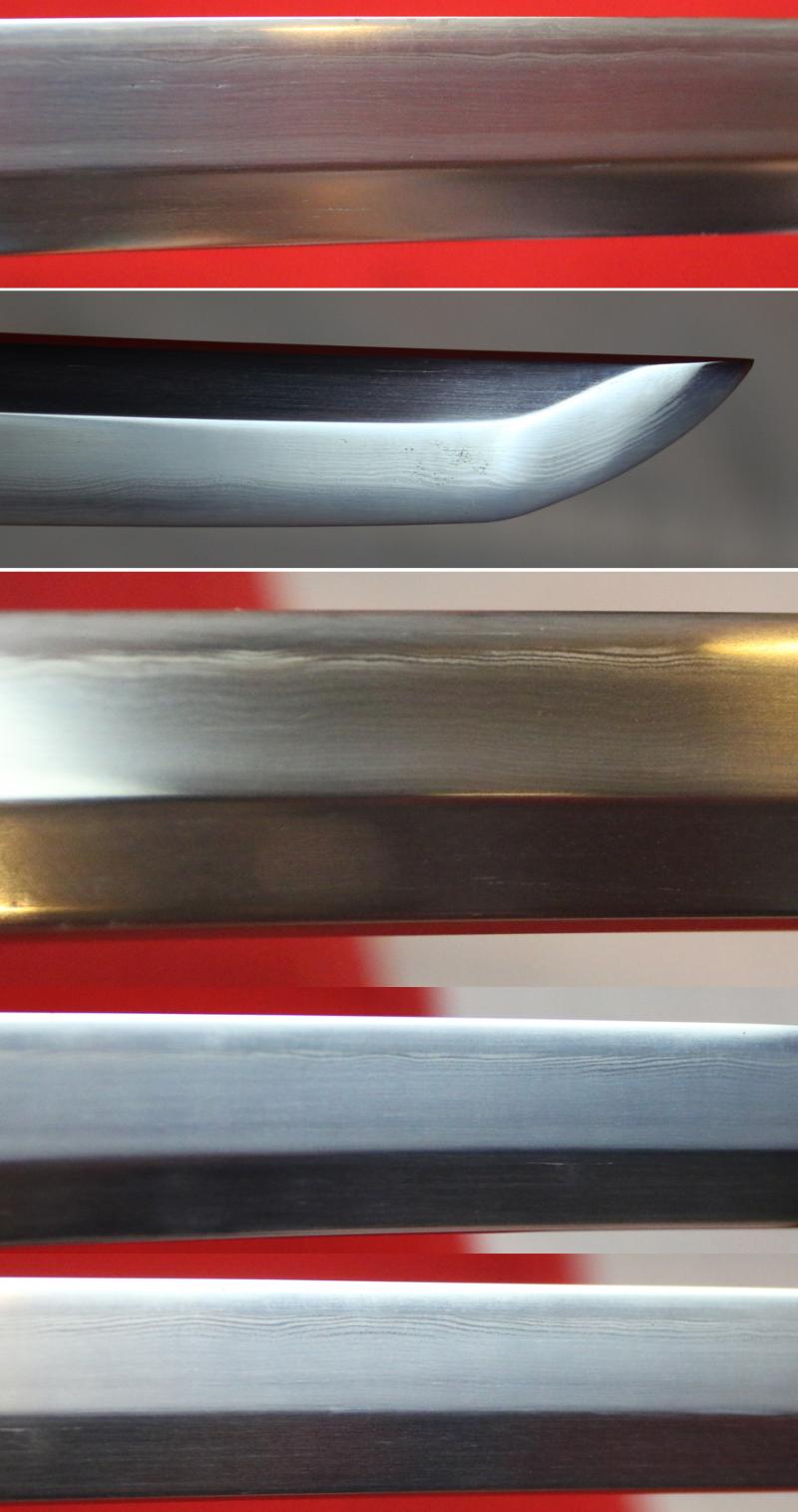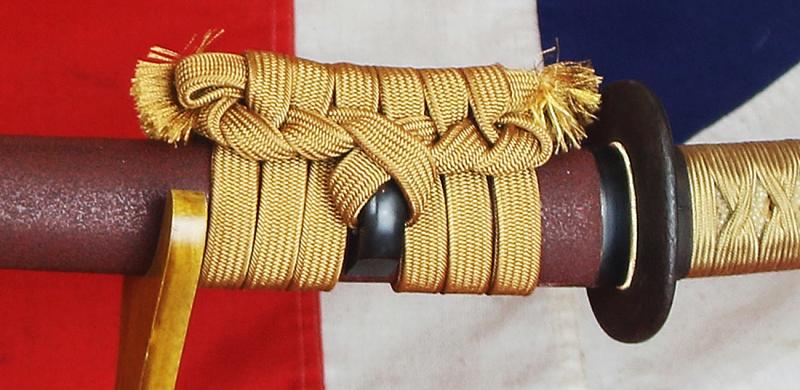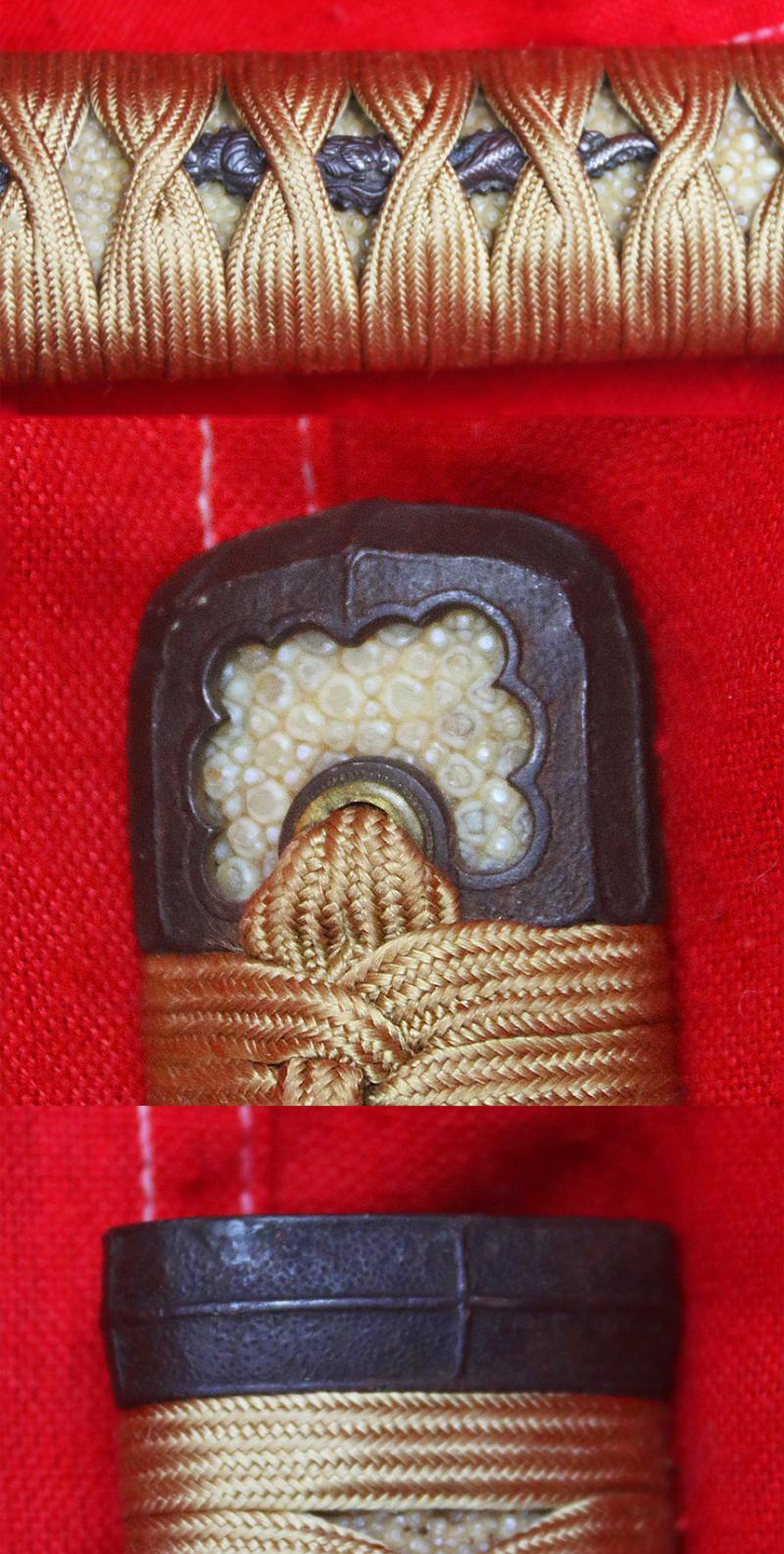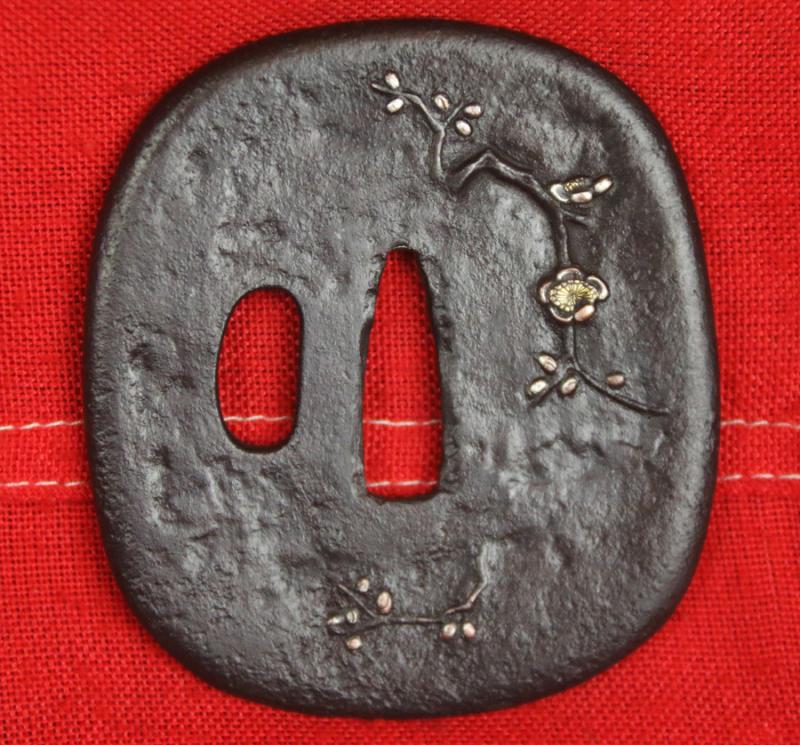Most Beautiful, Elegant & Breathtaking Shinto Period Yamato Katana With All Original Edo Period Sword Mounts. Brown Ishime Stone Finish Lacquer Saya & The Blade Shows Incredible Running Grain, Called, in Fine Damascus Steel Circles 'Maiden Hair' Pattern
A incredibly beautiful katana from the rare Yamato school of swordmaking, from the late 1600’s to early 1700’s. It has a very nice Edo period hammered plate iron tsuba decorated with branches of prunus blossom, tettsu handachi style fushi kashira, rich brown ishime stone finish saya, gold tsukaito over dragon menuki and traditional samegawa, giant rayskin. The saya is bound with a gold silk sageo. The blade is very fine, in stunning polish, with a fine ubu original length tang, and a very fine suguha hamon and stunning straight running grain hada. Its hada a very distinctive and beautiful misame straight grain hada, which is often the distinctive features of Yamato swords from Nara. It is said that all Yamato swords would have misame somewhere within the sword. Of course we use a term maiden hair which is certainly not a Japanese term, but it is very apt for such a stunning running grain that this sword has in abundance.
The five main Japanese sword making traditions ( Yamato, Yamashiro, Bizen, Soshu, Mino). The Yamato school is a school that originated in Yamato Province corresponding to present-day Nara Prefecture. Nara was the capital of ancient Japan. Since there is a legend that it was a swordsmith named Amakuni who first signed the tang of a sword, he is sometimes regarded as the founder and the oldest school. However, the founder identified in the material is Yukinobu in the Heian period. They forged the swords that were often worn by monk warriors called sōhei in Nara's large temples. The Yamato school consists of five schools: Senjuin, Shikkake, Taima, Tegai, and Hōshō. Each school forged swords under the supervision of a different temple. In the middle of the Muromachi period, swordsmiths moved to various places such as Mino, and the school disappeared. Their swords are often characterized by a deep curve, a narrow width from blade to back, a high central ridge, and a small tip. There are direct lines on the surface of the blade, the hamon is linear, and the grain at the boundary of the hamon is medium in size. It is often evaluated as a sword with a simple and strong impression
The samurai were roughly the equivalent of feudal knights. Employed by the shogun or daimyo, they were members of hereditary warrior class that followed a strict "code" that defined their clothes, armour and behaviour on the battlefield. But unlike most medieval knights, samurai warriors could read and they were well versed in Japanese art, literature and poetry.
Samurai endured for almost 700 years, from 1185 to 1867. Samurai families were considered the elite. They made up only about six percent of the population and included daimyo and the loyal soldiers who fought under them. Samurai means “one who serves."
Samurai were expected to be both fierce warriors and lovers of art, a dichotomy summed up by the Japanese concepts of to stop the spear expanding into bushido (the way of life of the warrior) and bun (the artistic, intellectual and spiritual side of the samurai). Originally conceived as away of dignifying raw military power, the two concepts were synthesised in feudal Japan and later became a key feature of Japanese culture and morality.The quintessential samurai was Miyamoto Musashi, a legendary early Edo-period swordsman who reportedly killed 60 men before his 30th birthday and was also a painting master. Members of a hierarchal class or caste, samurai were the sons of samurai and they were taught from an early age to unquestionably obey their mother, father and daimyo. When they grew older they could be trained by Zen Buddhist masters in meditation and the Zen concepts of impermanence and harmony with nature. They were also taught about painting, calligraphy, nature poetry, mythological literature, flower arranging, and the tea ceremony.
As part of their military training, it has been said, but possibly as part of the myth of samurai training, that samurai were taught to sleep with their right arm underneath them so if they were attacked in the middle of the night and their the left arm was cut off the could still fight with their right arm. It is further said that Samurai that tossed and turned at night were cured of the habit by having two knives placed on either side of their pillow.
Samurai have been describes as "the most strictly trained human instruments of war to have existed." They were expected to be proficient in the martial arts of aikido and kendo as well as swordsmanship and archery---the traditional methods of samurai warfare---which were viewed not so much as skills but as art forms that flowed from natural forces that harmonized with nature.
An individual, in certain circumstances, apparently didn't become a full-fledged samurai until, some say, he wandered around the countryside as begging pilgrim for a couple of years to learn humility. Again this may be part of the myth. However, when all his training was completed a samurai trainee that achieved samurai status and received a salary from his daimyo, paid from taxes (usually rice) raised from the local populace, he truly became the very best at his art in the world of sword combat
Swords in Japan have long been symbols of power and honour and seen as works of art.
29 inch blade tsuba to tip
Code: 24473










